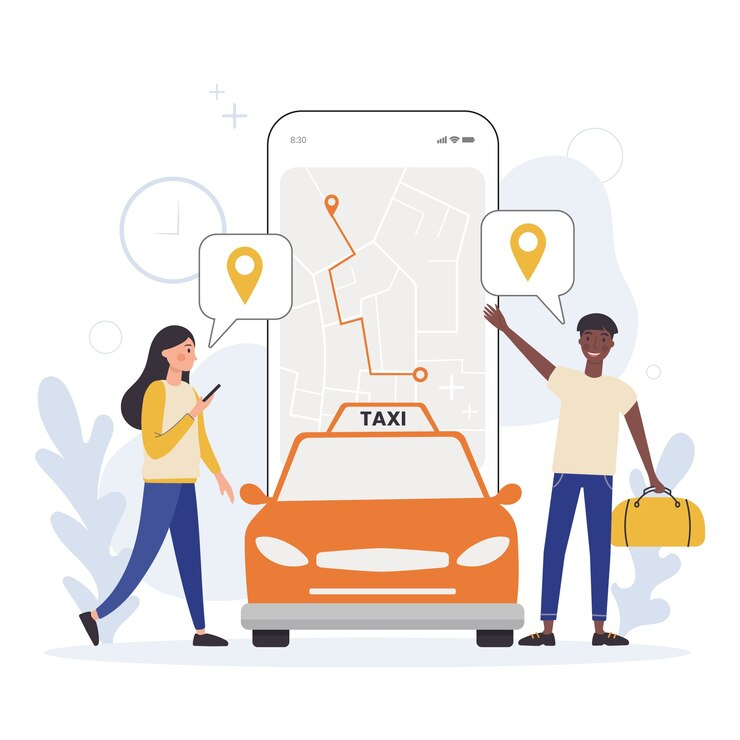The on-demand ride-hailing industry has changed how people move around cities. Apps like Uber have made it possible to book a cab with just a few taps on a phone. With the rising popularity of such platforms, entrepreneurs are now turning to Uber clone app development to build their own Uber-like services, offering custom features, improved user experience, and the potential to quickly enter the competitive market.
Developing an Uber clone app is a great way to enter the market quickly. However, to stand out from the competition, you must include the right set of features. In this blog, we’ll walk through the most important features your Uber clone app should have to ensure a smooth user experience and efficient operations.
User App Features
The user side of your Uber clone app is where customers book rides, make payments, and manage their trip history. These features should be intuitive and easy to use.
Easy Registration and Login
Users should be able to sign up or log in using their phone number, email, or social media accounts. A quick onboarding process makes a great first impression.
Real-Time Ride Booking
Allow users to book a ride in real time. Show available drivers nearby and let the user choose the type of ride they want, like economy, premium, or carpool.
Fare Estimation
Before confirming the booking, the app should provide an estimated fare based on distance, time, and ride type. This helps users make informed decisions.
Real-Time Tracking
Users should be able to track their assigned driver on the map in real time. This feature adds convenience and builds trust.
In-App Chat and Calling
Give users the ability to contact drivers directly from the app using chat or voice call. This is useful for sharing pickup locations or instructions.
Multiple Payment Options
Include various payment methods like credit/debit cards, digital wallets, UPI, and even cash. A flexible payment system makes the app more user-friendly.
Ride History
Users should have access to their past ride details, including date, fare, pickup and drop locations, and driver information.
Rating and Review System
After the ride, users should be able to rate the driver and write a review. This helps maintain quality service and accountability.
Driver App Features
Drivers are the backbone of any ride-hailing business. A simple and efficient app helps them deliver better service and manage rides easily.
Driver Profile and Documents Upload
Drivers should be able to create a profile and upload essential documents like license, ID proof, and vehicle papers. The admin should be able to verify these documents.
Trip Alerts
Once a user books a ride, the driver should receive a trip request with pickup details. They can accept or reject the trip based on availability.
GPS Navigation
Integrate Google Maps or similar services to guide drivers to the pickup and drop-off locations. This helps reduce delays and ensures accuracy.
Earnings Dashboard
Drivers should be able to track their daily, weekly, and monthly earnings in the app. This feature keeps them informed and motivated.
Ride History and Ratings
Like users, drivers should also be able to view their trip history and ratings given by users. Positive feedback helps build their profile.
Admin Panel Features
The admin dashboard controls the entire app ecosystem. It manages users, drivers, payments, promotions, and more.
User and Driver Management
Admins can monitor user and driver accounts, verify documents, and handle any complaints or issues raised during rides.
Trip Management
Admins should be able to track all trips in real time, including canceled or completed ones. This helps in analyzing patterns and resolving disputes.
Fare Management
Flexible fare settings are essential. Admins should be able to set base fares, surge pricing during high-demand hours, and custom rates for different ride types.
Promo Codes and Discounts
An easy way to attract new users is by offering promo codes. The admin panel should allow creation and tracking of promo campaigns.
Payment and Commission Tracking
The panel should help track payments made by users and commissions earned from each trip. It should also manage payouts to drivers.
Reports and Analytics
Having data on user activity, revenue, driver performance, and feedback helps make informed decisions to grow the business.
Read More: Is Uber in Italy? Top 10 Ride-Sharing Apps to Use in 2025
Advanced Features for the Future
Multi-Language and Currency Support
If you plan to expand into different regions, support for multiple languages and currencies is a must.
Scheduled Rides
Let users schedule a ride in advance. This is helpful for airport pickups, work commutes, and early morning rides.
Panic Button (SOS)
A built-in SOS button lets users or drivers alert emergency contacts or local authorities in case of danger.
Wallet System
Adding an in-app wallet helps users pay easily and also supports cashback or loyalty programs.
Geofencing
This allows admins to restrict services to specific areas. It’s helpful when launching in new regions or testing a market.
Referral Program
Allow users to invite friends and earn rewards. This helps grow the user base through word-of-mouth.
FAQs
What is an Uber clone app?
An Uber clone app is a ready-made taxi booking app solution that replicates Uber’s features. It includes user, driver, and admin panels and can be customized to suit your business.
Can I customize the features in a clone app?
Yes, clone apps are fully customizable. You can add new features, change the UI/UX, and even integrate third-party tools.
How long does it take to build an Uber clone app?
If you're using a pre-built script, it can be launched in 2 to 4 weeks. Custom development from scratch may take 3 to 6 months.
Is it expensive to develop an Uber clone app?
The cost depends on features, platforms (iOS, Android), and customization. A basic version can start from $10,000 and go up based on complexity.
Can I add food or grocery delivery features to the app later?
Yes, many entrepreneurs choose to expand their services by adding modules like food delivery, grocery delivery, or even home services, similar to a Gojek-style model.

Conclusion
Developing a successful Uber clone app takes more than just copying features. You need to understand what today’s users expect and create a platform that offers speed, safety, and convenience. From seamless ride booking to secure payments and real-time tracking, every feature plays an important role.
Make sure your app is scalable and flexible enough to adapt to future trends, such as electric vehicles, subscription-based services, and voice-activated bookings. By focusing on core features and enhancing them with innovative tools, your Uber clone app can stand out in a competitive market.
To truly build a strong and versatile platform, many startups are now choosing to go beyond just ride-hailing and include multi-service options. That’s where looking at a gojek clone app becomes relevant. With the right features, technology, and team, you can build a smart, user-friendly solution that drives long-term success in the on-demand economy.







Comments